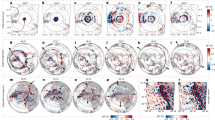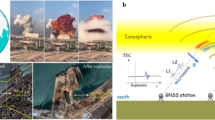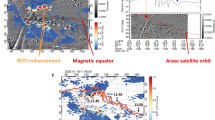Abstract
EXPERIMENTAL evidence has been obtained over a relatively large geographical area in the western hemisphere confirming the existence of abnormally high F2-layer densities during, or shortly after, geomagnetic disturbances. The observed effect of these high F2-layer densities is to propagate radio frequencies at least 20 per cent above the median maximum usable frequency of the period in question.
This is a preview of subscription content, access via your institution
Access options
Subscribe to this journal
Receive 51 print issues and online access
$199.00 per year
only $3.90 per issue
Buy this article
- Purchase on Springer Link
- Instant access to full article PDF
Prices may be subject to local taxes which are calculated during checkout
Similar content being viewed by others
References
Berkner and Seaton, Terr. Mag., 419 (Dec. 1940).
Appleton and Piggott, Nature, 165, 130 (1950).
Gerson, N. C., Nature, 166, 316 (1950).
D-series as issued throughout this period by the Central Radio Propagation Laboratory.
Ferrell, unscheduled report, RASO-2 (March 15, 1949).
Author information
Authors and Affiliations
Rights and permissions
About this article
Cite this article
FERRELL, O. Enhanced Trans-Equatorial Propagation following Geomagnetic Storms. Nature 167, 811–812 (1951). https://doi.org/10.1038/167811a0
Issue Date:
DOI: https://doi.org/10.1038/167811a0
Comments
By submitting a comment you agree to abide by our Terms and Community Guidelines. If you find something abusive or that does not comply with our terms or guidelines please flag it as inappropriate.



